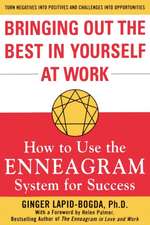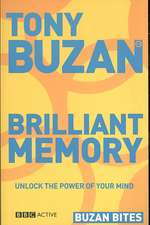AA to Z: Addictionary to the 12-Step Culture
Autor Christopher Cavanaughen Limba Engleză Paperback – 28 feb 1998
"Good morning, how am I?"
--Overheard at a Codependents Anonymous meeting
Throughout the world today, more than two million alcoholics and hundreds of thousands of drug addicts, compulsive overeaters, sex addicts, compulsive gamblers, codependents, and other addicts abstain from their addiction, having found a new life by practicing the 12-step program of recovery developed by Alcoholics Anonymous. Over the years, their practices have evolved into a way of life--the 12-Step Culture.
"I don't remember my first meeting, but I've been told that I talked for a really long time."
--Mary, a member of Narcotics Anonymous
AA to Z is the first book to document the richness and diversity of the lives of recovering people and to provide an encyclopedic look at this unique subculture. Less self-help than enlightenment and entertainment, AA to Z is comprised of real-life stories of recovering addicts as well as an "addictionary" of recovery terminology. Everything from the well-known slogan "One Day at a Time" to more esoteric terms like "pigeon" (a lovingly insulting term for a newcomer to the program) and "Wharf Rats" (sober Deadheads) is explained with clarity, insight, and humor.
"How it works, you ask--slowly and well."
--Cooper, a member of Alcoholics Anonymous
Conversational, witty, and engaging, AA to Z is a must-have for all 12-step participants and their loved ones, and it offers the uninitiated a fascinating firsthand look at one of the most influential yet least-documented cultural movements of our time.
Preț: 88.25 lei
Nou
Puncte Express: 132
Preț estimativ în valută:
16.89€ • 17.53$ • 14.08£
16.89€ • 17.53$ • 14.08£
Carte disponibilă
Livrare economică 01-15 martie
Preluare comenzi: 021 569.72.76
Specificații
ISBN-13: 9780385483407
ISBN-10: 0385483406
Pagini: 208
Dimensiuni: 140 x 215 x 13 mm
Greutate: 0.27 kg
Editura: MAIN STREET
ISBN-10: 0385483406
Pagini: 208
Dimensiuni: 140 x 215 x 13 mm
Greutate: 0.27 kg
Editura: MAIN STREET
Notă biografică
Christopher Cavanaugh is a veteran of the publishing industry; he was an editor at Family Circle in New York City, as well as the managing editor for Meredith Books in Des Moines, Iowa. He is currently managing editor for Reader's Digest General Books. He lives in Ossining, New York.
Extras
Abuse. Using a substance, behavior, or other person in a destructive manner. A person who has a beer after a softball game is not abusing alcohol; a person who sneaks off from the bench to down a pint of whiskey and then drinks ten beers after the game is abusing alcohol.
Blackout. A period of amnesia, brought on by alcohol or another drug. An alcoholic, for example, can be drinking, be awake, and have interactions with others, but not remember any of it the next day. Sometimes alcoholics come out of blackouts still awake and don't remember what happened two minutes earlier.
Camel A symbol of sobriety. There's a poem that's associated with A.A. called "Dry as a Camel." It goes like this:
The camel each day goes twice to his knees;
He picks up his load with the greatest of ease;
He goes through the day with his head held high;
And he stays for that day completely dry.
I have a camel pendant that I wear around my neck, and I carry a medallion that has a camel on one side with the words "one day at a time" and the poem on the other. TED
Drunkalog (also Drugalog) A long story, told at a meeting, that concentrates on the days of the speaker's active addiction, rather than on recovery. Some people love to hear these stories, but it's safe to say most find them boring. Most prefer stories about how recovery started, how the person practices the program, and how the person has changed.
Enabling. Behavior that allows an addict to continue the self-deception and self-destruction of substance abuse. Examples: a wife who calls in "sick" for a hungover husband; a father who ignores blatant signs that his teenage daughter is caught up in drugs. Less likely today is Ted's remembrance of a drunken trip to Omaha. I had a 1963 Buick Electra, and I wanted to see how fast I could get it to go. The first policeman who stopped me clocked me at 95 miles per hour; the second stopped me for a broken headlight; and the third stopped me for running a red light. I was in the bag, but all three let me go. TED
Fake It Till You Make It. Suggestion often made to NEWCOMERS who feel they can't get the program and will go back to old behavior. The suggestion implies that if the newcomer acts according to the steps and teachings of the program, then the program will begin to work and the anxiety will fall away.
Garbage Head. An addict who will use whatever is available to get high.
How Do You Spell Relief? Slogan of 12-Steppers who believe that all addicts and codependents are basically the same--only the drug or method for escaping oneself differs. Once in the program, people spell relief H-I-G-H-E-R P-O-W-E-R.
If Ya Wonders, Then Ya Is. Saying that acknowledges that people who wonder if they are addicts probably are. Nonaddicts don't think they might be addicts.
The John Larroquette Show. An NBC comedy series in which John Larroquette plays the role of John Hemingway, an alcoholic recovering in A.A. Attendance at Tuesday night meetings went down the first season of the show, when Hemingway struggled with his newfound sobriety. David Crosby played his sponsor, who eventually went back out. Lately the show centers around Hemingway's love life, and Tuesday's meetings get good crowds again.
Kinsman. A clean and sober biker's club located in northern California. They practice the principles of NA and A.A., and they sponsor and support many clean and sober biker runs. Similar clubs exist throughout the United States.
Living Cyber. An online A.A. group that takes its name from a play on words of the title of the A.A. booklet Living Sober.
More Will Be Revealed. Slogan of ACCEPTANCE often said to struggling newcomers. As recovery progresses, it becomes apparent that the journey will never be complete. More and more defects, strengths, desires, fears, and feelings appear to the conscious mind, and this will be so until the end.
Normie. A person who is not addicted to anything.
Old-timer. A person with many years in the program. It's all relative, but most will agree that someone with over twenty years is an old-timer. How to become an oldtimer in A.A.: Don't Drink and Don't Die. Overheard at a 12-Step meeting.
Pity Pot. The illusory place an addict sits when he feels sorry for himself, despite having the grace of God in his life.
Qualification. A speech made at a meeting by a 12-Stepper that describes the person's active addiciton, and their recovery. It's a tongue-in-cheek term because no one has to qualify for a 12-Step program. Anyone who says they're a member is a member.
Research. A slang term for a relapse. It's said you can go out and use to research whether you are truly an addict. Or you can research whether active addiction has gotten any better.
Stinking Thinking. Addiction is the only disease which tells the sufferer that they do not have a disease. Any thoughts that promote this lie constitute stinking thinking."I wasn't that bad," "maybe I can have just one," "what's the point anyway, I'll never be able to hold on," "people like me better when I drink"--these are all examples of stinking thinking.
Telephonitis. A problem some recovering people have. They use the phone too much and drive their fellow recoverees crazy.
Unmanageable. A time in life when a person can no longer function successfully by means of the unaided will. For many this period goes on for years in active addiction, but denial keeps it from the awareness of the sufferer. Toward the end of my active addiction, my recovering sister asked me if I thought my life was unmanageable. Well, I thought, mismanaged maybe, but not unmanageable. RON
Victim or Volunteer? Saying that points out that addicts are victims of their disease until the day they find the means to recover. After that, they become volunteers to suffering.
Wharf Rats. Groups of sober fans of the rock group the Grateful Dead. When the band was touring, the Wharf Rats gathered for meetings under an umbrella of yellow balloons during breaks in the concert. The name Wharf Rats comes from a Dead song of the same name, in which alcoholic August West tells his story. Wharf Rats have put a Grateful Dead twist on many of the familiar slogans. They call themselves "friends of August W.," and use such phrases as "one show at a time," "let go, let Jerry," and "another dopeless hope fiend."
YET. Acronym for You're Eligible Too.
Yets All the things that might not have happened to an ADDICT--divorce, unemployment, mental wards, jail, death--but very well could have happened if the addict did not find recovery. My alcoholism hasn't landed me in jail, yet. Overheard at an A.A. meeting.
Zero. What you get if you pursue the program with only partial effort.
Blackout. A period of amnesia, brought on by alcohol or another drug. An alcoholic, for example, can be drinking, be awake, and have interactions with others, but not remember any of it the next day. Sometimes alcoholics come out of blackouts still awake and don't remember what happened two minutes earlier.
Camel A symbol of sobriety. There's a poem that's associated with A.A. called "Dry as a Camel." It goes like this:
The camel each day goes twice to his knees;
He picks up his load with the greatest of ease;
He goes through the day with his head held high;
And he stays for that day completely dry.
I have a camel pendant that I wear around my neck, and I carry a medallion that has a camel on one side with the words "one day at a time" and the poem on the other. TED
Drunkalog (also Drugalog) A long story, told at a meeting, that concentrates on the days of the speaker's active addiction, rather than on recovery. Some people love to hear these stories, but it's safe to say most find them boring. Most prefer stories about how recovery started, how the person practices the program, and how the person has changed.
Enabling. Behavior that allows an addict to continue the self-deception and self-destruction of substance abuse. Examples: a wife who calls in "sick" for a hungover husband; a father who ignores blatant signs that his teenage daughter is caught up in drugs. Less likely today is Ted's remembrance of a drunken trip to Omaha. I had a 1963 Buick Electra, and I wanted to see how fast I could get it to go. The first policeman who stopped me clocked me at 95 miles per hour; the second stopped me for a broken headlight; and the third stopped me for running a red light. I was in the bag, but all three let me go. TED
Fake It Till You Make It. Suggestion often made to NEWCOMERS who feel they can't get the program and will go back to old behavior. The suggestion implies that if the newcomer acts according to the steps and teachings of the program, then the program will begin to work and the anxiety will fall away.
Garbage Head. An addict who will use whatever is available to get high.
How Do You Spell Relief? Slogan of 12-Steppers who believe that all addicts and codependents are basically the same--only the drug or method for escaping oneself differs. Once in the program, people spell relief H-I-G-H-E-R P-O-W-E-R.
If Ya Wonders, Then Ya Is. Saying that acknowledges that people who wonder if they are addicts probably are. Nonaddicts don't think they might be addicts.
The John Larroquette Show. An NBC comedy series in which John Larroquette plays the role of John Hemingway, an alcoholic recovering in A.A. Attendance at Tuesday night meetings went down the first season of the show, when Hemingway struggled with his newfound sobriety. David Crosby played his sponsor, who eventually went back out. Lately the show centers around Hemingway's love life, and Tuesday's meetings get good crowds again.
Kinsman. A clean and sober biker's club located in northern California. They practice the principles of NA and A.A., and they sponsor and support many clean and sober biker runs. Similar clubs exist throughout the United States.
Living Cyber. An online A.A. group that takes its name from a play on words of the title of the A.A. booklet Living Sober.
More Will Be Revealed. Slogan of ACCEPTANCE often said to struggling newcomers. As recovery progresses, it becomes apparent that the journey will never be complete. More and more defects, strengths, desires, fears, and feelings appear to the conscious mind, and this will be so until the end.
Normie. A person who is not addicted to anything.
Old-timer. A person with many years in the program. It's all relative, but most will agree that someone with over twenty years is an old-timer. How to become an oldtimer in A.A.: Don't Drink and Don't Die. Overheard at a 12-Step meeting.
Pity Pot. The illusory place an addict sits when he feels sorry for himself, despite having the grace of God in his life.
Qualification. A speech made at a meeting by a 12-Stepper that describes the person's active addiciton, and their recovery. It's a tongue-in-cheek term because no one has to qualify for a 12-Step program. Anyone who says they're a member is a member.
Research. A slang term for a relapse. It's said you can go out and use to research whether you are truly an addict. Or you can research whether active addiction has gotten any better.
Stinking Thinking. Addiction is the only disease which tells the sufferer that they do not have a disease. Any thoughts that promote this lie constitute stinking thinking."I wasn't that bad," "maybe I can have just one," "what's the point anyway, I'll never be able to hold on," "people like me better when I drink"--these are all examples of stinking thinking.
Telephonitis. A problem some recovering people have. They use the phone too much and drive their fellow recoverees crazy.
Unmanageable. A time in life when a person can no longer function successfully by means of the unaided will. For many this period goes on for years in active addiction, but denial keeps it from the awareness of the sufferer. Toward the end of my active addiction, my recovering sister asked me if I thought my life was unmanageable. Well, I thought, mismanaged maybe, but not unmanageable. RON
Victim or Volunteer? Saying that points out that addicts are victims of their disease until the day they find the means to recover. After that, they become volunteers to suffering.
Wharf Rats. Groups of sober fans of the rock group the Grateful Dead. When the band was touring, the Wharf Rats gathered for meetings under an umbrella of yellow balloons during breaks in the concert. The name Wharf Rats comes from a Dead song of the same name, in which alcoholic August West tells his story. Wharf Rats have put a Grateful Dead twist on many of the familiar slogans. They call themselves "friends of August W.," and use such phrases as "one show at a time," "let go, let Jerry," and "another dopeless hope fiend."
YET. Acronym for You're Eligible Too.
Yets All the things that might not have happened to an ADDICT--divorce, unemployment, mental wards, jail, death--but very well could have happened if the addict did not find recovery. My alcoholism hasn't landed me in jail, yet. Overheard at an A.A. meeting.
Zero. What you get if you pursue the program with only partial effort.
Textul de pe ultima copertă
AA to Z is the first book to document the richness and diversity of the lives of recovering people and to provide an encyclopedic look at this unique subculture. Less self-help than enlightenment and entertainment, AA to Z is comprised of real-life stories of recovering addicts as well as an "addictionary" of recovery terminology. Everything from the well-known slogan "One Day at a Time" to more esoteric terms like "pigeon" (a lovingly insulting term for a newcomer to the program) and "Wharf Rats" (sober Deadheads) is explained with clarity, insight, and humor. Conversational, witty, and engaging, AA to Z is a must-have for all 12-step participants and their loved ones, and it offers the uninitiated a fascinating firsthand look at one of the most influential yet least-documented cultural movements of our time.
Descriere
Conversational, witty, and engaging, this must-have reference for all 12-step participants and their loved ones is comprised of real-life stories of recovering addicts as well as definitions and explanations of the terminology. The book offers the uninitiated a fascinating firsthand look at one of the most influential yet least documented cultural movements of our time.









